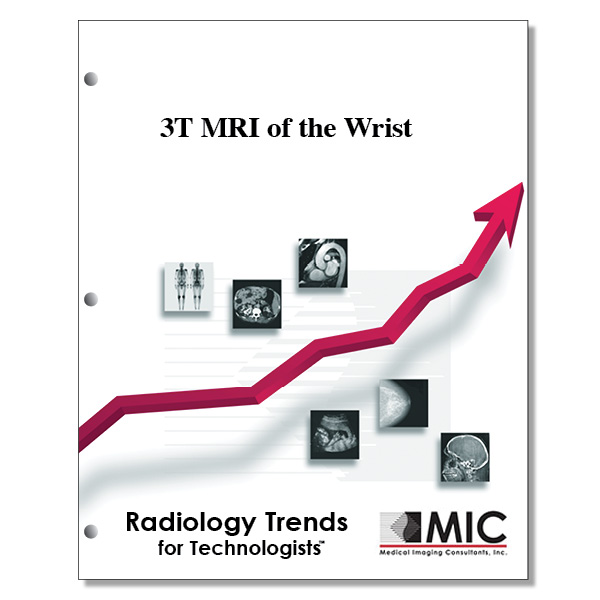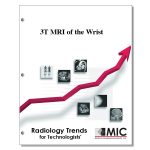

3T MRI of the Wrist
The improvements in wrist imaging gained by using MRI, especially at high magnetic field strength, are discussed.
Course ID: Q00351 Category: Radiology Trends for Technologists Modalities: MRI, Radiography3.5 |
Satisfaction Guarantee |
$37.00
- Targeted CE
- Outline
- Objectives
Targeted CE per ARRT’s Discipline, Category, and Subcategory classification:
[Note: Discipline-specific Targeted CE credits may be less than the total Category A credits approved for this course.]
Magnetic Resonance Imaging: 3.50
Procedures: 3.50
Musculoskeletal: 3.50
Registered Radiologist Assistant: 2.25
Procedures: 2.25
Musculoskeletal and Endocrine Sections: 2.25
Radiation Therapy: 1.00
Procedures: 1.00
Treatment Sites and Tumors: 1.00
Outline
- Introduction
- 3-T MR Imaging Protocol
- Ligaments and the TFCC
- Flexor and Extensor Tendons
- Articular Cartilage
- Soft-Tissue Masses
- Bones
- Nerve Entrapment Syndromes
- Vascular Lesions
- Conclusions
Objectives
Upon completion of this course, students will:
- understand the improvement in the signal-to-noise ratio at 3T versus 1.5T
- understand the advantages of increased SNR
- know why contrast resolution is important in the wrist
- be familiar with coil selection for imaging of the wrist
- understand strategies for decreasing wrap-around or aliasing
- know the physiologic artifacts that may affect wrist images
- be familiar with the field of view (FOV) commonly used for wrist anatomy
- be able to list the proximal carpal bones in order from lateral to medial
- be able to list the distal carpal bones in order from lateral to medial
- define the term “volar” in relation to the wrist
- understand how ligament tears are categorized
- know which component of the scapholunate ligament (SLL) is the most functionally important
- know which component of the scapholunate and lunotriquetral ligaments is involved in degenerative tears
- understand the causes of wrist instability
- know the image orientations needed for scapholunate and lunotriquetral ligament evaluation
- be familiar with the composition of the TFCC
- list the bones cushioned by the TFCC
- understand how the TFCC developed
- be able to identify things that may be mistaken for a tear of the TFCC
- know which area of the TFCC is avascular
- be familiar with injuries associated with TFCC tears
- know the best plane for evaluating the flexor and extensor tendons
- recognize the normal appearance of the flexor and extensor tendons on MR images
- be able to define tendinosis
- understand how laterality of tenosynovitis can help determine its cause
- recognize tendon tears at 3T
- describe the appearance of hyaline cartilage on MR images
- identify the most common soft tissue mass in the wrist
- recognize the appearance of ganglion cysts on MRI
- identify which tumors may be found in the median and ulnar nerve sheaths
- know the definition of thenar and hypothenar eminences
- know what signal intensity is expected on T2-weighted images of an entrapped nerve
- know frequent causes of ulnar tunnel syndrome
- be able to characterize venous malformations
- compare the MR signal from a hemangioma to that of muscle tissue
